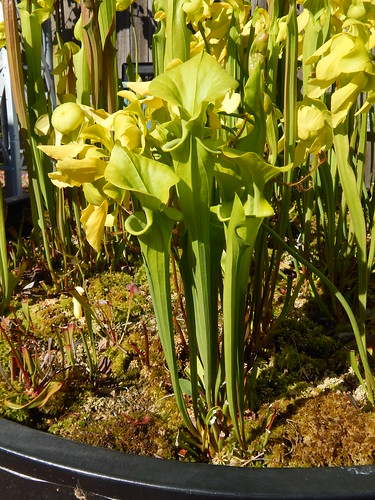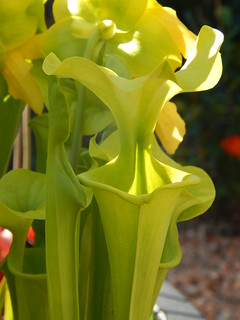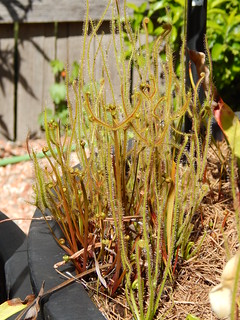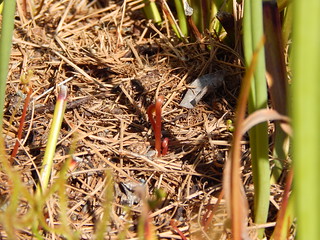This is part two of a three-part post. Click Here to see Part One and Here to see Part Three.
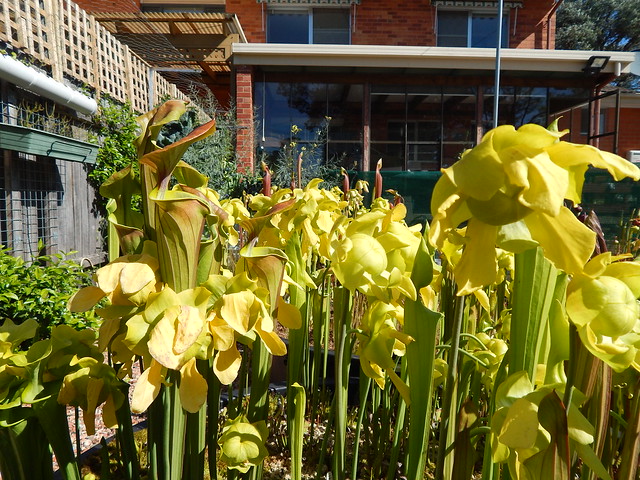
Here’s the general Sarracenia flava bog in flower. It contains pretty much every major variety of Sarracenia flava in it.
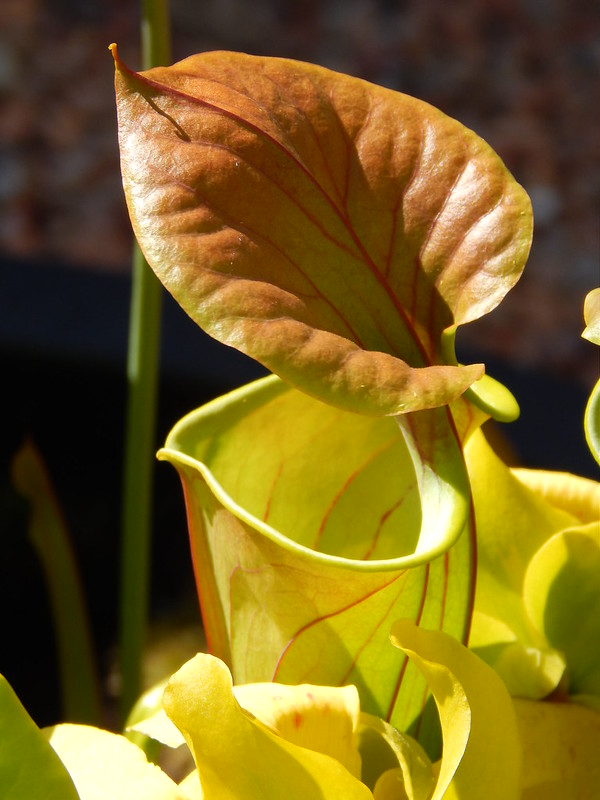
Standing head and shoulders above the rest is a nearly 40 year old clone of Sarracenia flava var. cuprea that David Martin germinated from seed ex Fred Howell in the late 1970s. As it was David’s first S. flava, he called it ‘F1’. Nearly 40 years later, it is still growing strong.
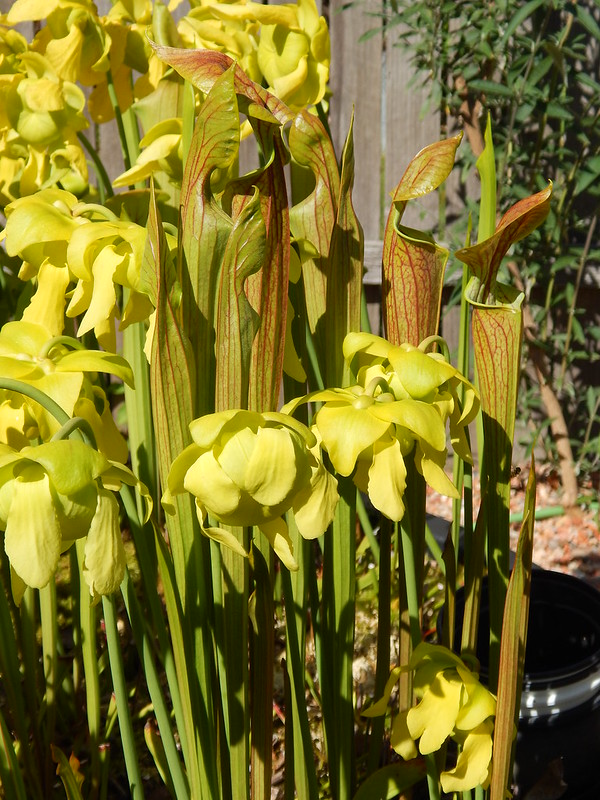
Perhaps as old as F1 is this clone of Sarracenia flava var. ornata. This plant is controversial because a lot of people suspect it has S. oreophila as a parent. Nonetheless, its pitchers are very flava like and heavily veined to boot. I suspect there are two clones of this plant circulating; this one flushes red whereas the other one does not. Whatever it is, I enjoy it in my garden.
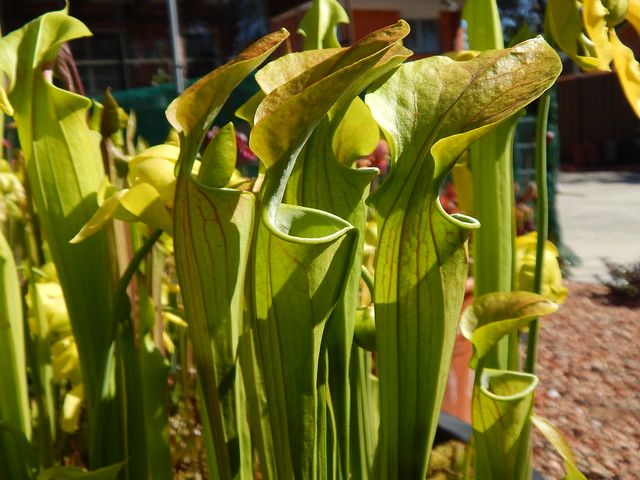
Speaking of S. oreophila, here’s my only plant of this rather rare species. While not the first pitcher open, it has quickly produced a lot of traps and is gorging itself on the hoverflies common in Canberra at the moment. It will die down again soon, as its native habitat is not wet for as long as that of S. flava.
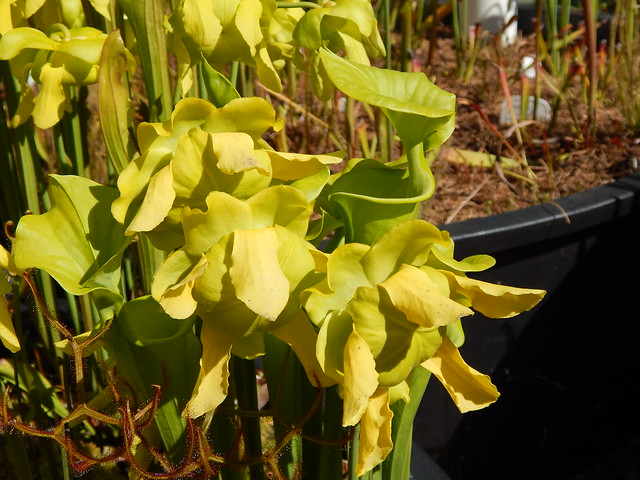
Here is a nice Sarracenia flava var. maxima. This variety is not so easy to get hold of, and it was actually the last I added to my collection. There are a number of clones doing the rounds in Australia, but the easiest one to get – at least when I was starting out – soon proved to be a hybrid with S. alata. This one is from seed ex Harleyville, North Carolina, grown by Victorian grower Ron Abernethy.
And these are the other two seed-grown clones of maxima I got from Ron. There is a fourth as well, but it is always late to pitcher.
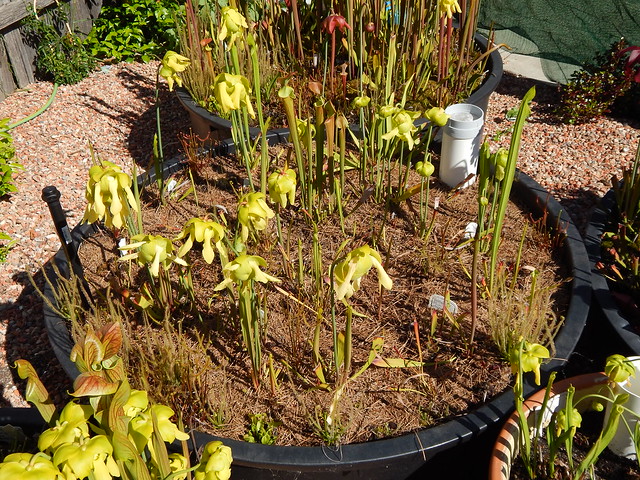
The latest bog garden is coming along nicely, but it will take a year to settle everything in.
This garden has hundreds of Drosera binata root cuttings in it. Every day, a new growth point sticks through the pine mulch. It should be spectacular come late summer!
